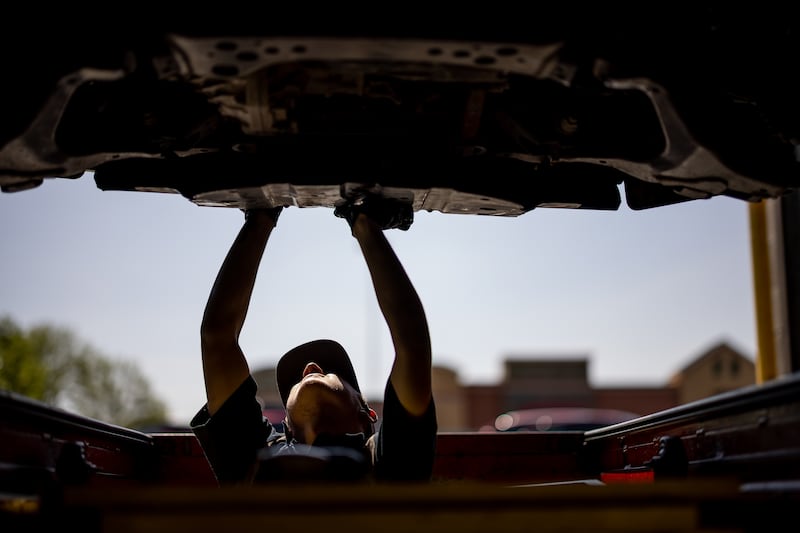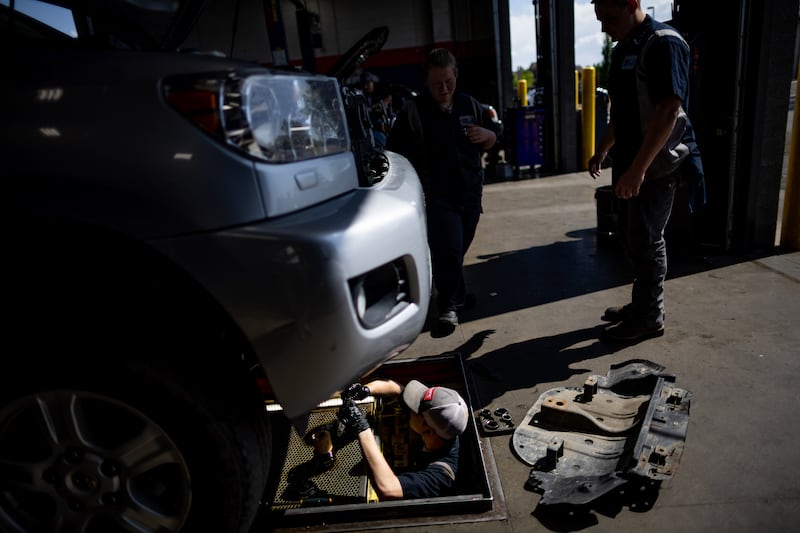Thanks to record-high prices on new vehicles, drivers are working to keep their current cars on the road longer, so long in fact that the average age of the 284 million vehicles currently in operation in the U.S. just hit an all-time high of 12.5 years.
That, according to a report released Monday by S&P Global Mobility that found the average age of the U.S. fleet increased for the sixth straight year and also just saw the highest year-over-year age jump since the 2008-2009 recession.
While widespread supply chain issues and a critical shortage of computer chips led to extremely low inventories and subsequent price increases throughout the worst of COVID-19 pandemic conditions, economic forces including high interest rates and high vehicle prices are the primary drivers behind the current drop in new vehicle purchases.
Those higher prices are partially the result of ongoing inflationary pressures but major vehicle manufacturers have also shifted focus on what cars they’re making, eliminating lower end models and beefing up selections at the higher end of the price spectrum.
According to the Washington Post, automakers are selling fewer new vehicles in the United States than they did before the pandemic — about 13.9 million last year, versus 17 million in 2019. But their 2022 revenues were still $15 billion higher than in 2019, because the mix they are selling is more expensive, according to Cox Automotive.
New vehicle prices are up 24% since the start of the pandemic and, as of April, the average cost stood near $48,000 according to Edmunds.com. And, opting to add a previously-owned vehicle to the family fleet isn’t the deal it used to be either, with used car prices streaking up 40% since COVID-19 hit and now at nearly $29,000 on average.
“The repair-versus-buy equation changed,” Todd Campau, an associate director with S&P Global, told the Associated Press. Even with rising repair costs, Campau said, it’s still typically more cost-effective to fix an older vehicle than to spring for a purchase.
The average vehicle age, which has been edging up since 2019, accelerated this year by a substantial three months. And while 12.5 years is the average, Campau noted, more vehicles are staying on the road for 20 years or more, sometimes with three or four successive owners.

That’s a dynamic that’s showing up in repair and service shops around the country, including at the Utah-based Burt Brothers Tire and Service centers across the state.
Trent Paver, manager of the Burt Brothers shop in Farmington, said the shift in owners looking to keep their vehicles on the road for as long as possible in the face of exorbitant new and used vehicle prices is showing up both in service volumes and the conversations he’s having with customers.
“What I’m hearing is no one wants to go out and take on a $900 a month new car payment with astronomical interest rates,” Paver said. “For a lot of people the choice becomes buy a new car or keep the one they have and be able to take a vacation.”
Paver said vehicle repair volumes are up at Burt Brothers’ shops and they’re seeing more high-mileage vehicles come through as customers choose to invest in their current cars and trucks over looking for pricey upgrades.
And that trend appears one likely to continue per S&P Global’s analysis.
According to the report, the volumes of vehicles ages 6-14 will grow by another 10 million units by 2028, adding to an already favorable volume of vehicles in the aftermarket target range.
“Traditionally, the ‘sweet spot’ for aftermarket repair was considered 6-11 years of age, but with average age at 12.5 years, the sweet spot for aftermarket repair is growing,” said Campau in the report. “There are almost 122 million vehicles in operation over 12 years old.”
Paver said that while newer vehicles, generally speaking, have longer lifespans the much more significant factor when it comes to getting the most miles out of your car or truck is how well it’s been cared for.

“It really comes down to how well you maintain the vehicle or not,” Paver said. “If you’re not doing regular maintenance, that’s a make or break deal on longevity.
“The little stuff matters. Keeping up on fluid exchanging, regular oil changes, vehicle checkovers, even regular car washes make a difference.”
Paver said another factor that’s contributing to repair volumes in Utah, outside the new and used car ecosystem, is the decision by state lawmakers to eliminate the safety inspection that once was required as part of the Utah vehicle registration process. Paver said many problems that were once caught in those requisite inspections now don’t show up, for those not pampering their vehicles, until something major goes wrong. Safety inspections were eliminated from the state registration process in 2018.
Paver said the key to getting the maximum life out of older vehicles is carefully following the manufacturer’s scheduled maintenance guidance and, when possible, taking advantage of whatever free inspection services are offered by repair service providers.
“Catching those issues early on can prevent dangerous failures and save customers a lot of money,” Paver said. “Sometimes thousands of dollars.”


